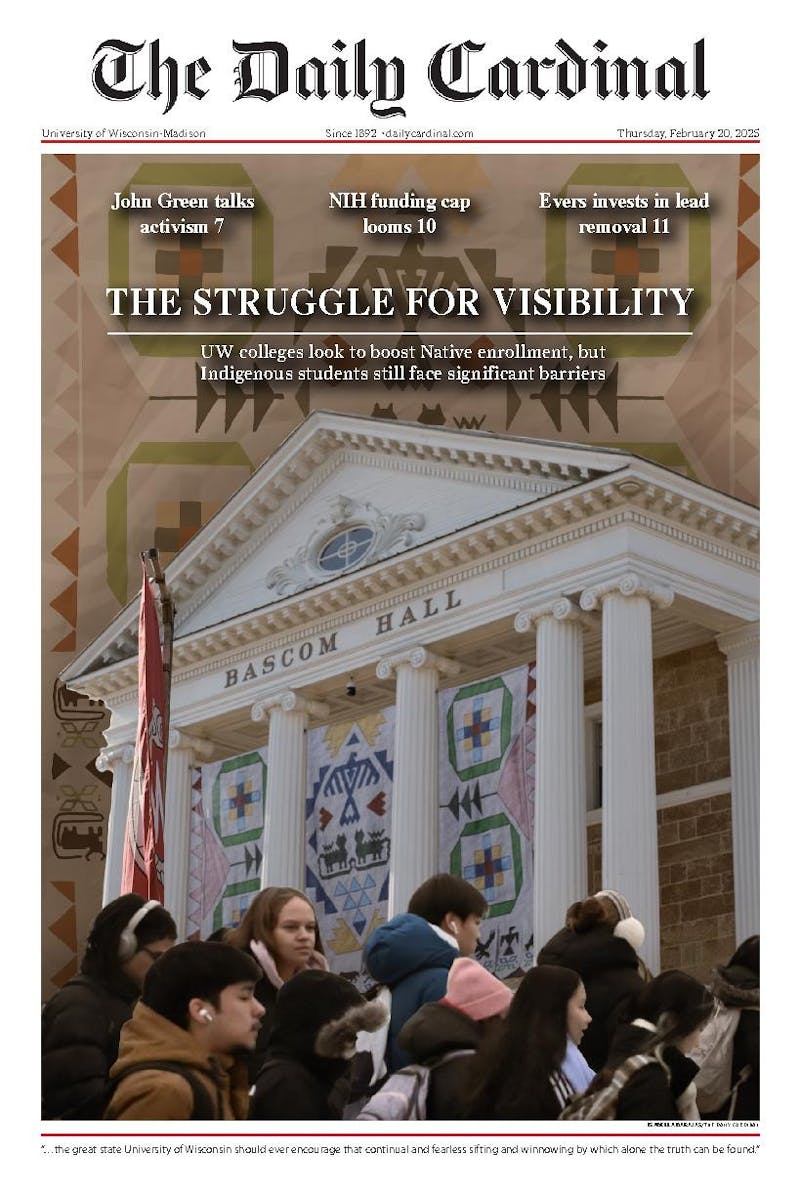The recent arrest of three teenagers for criminal damage to property is the latest incident in Madison's ongoing battle with graffiti.
According to the police report, one 14-year-old and two 13-year-olds were apprehended just before 3 a.m. on Nov. 9 when a Madison Police Department sergeant on patrol spotted them tagging a utility box. After stopping the teens, he discovered two cans of spray paint and several markers.
Markers are used to easily make designs on whatever object is being tagged, the report said. After further investigation, the teens were found responsible for over 200 instances of graffiti in the Madison area.
Crime statistics reveal this was not an isolated incident and graffiti is an ongoing problem for the city. There have been 62 graffiti complaints in Madison since Oct. 8, according to city statistics.
The majority of the complaints come from the downtown area, and the most common targets of graffiti are bus shelters, utility boxes, soda machines, traffic signs and sheds.
In an effort to remove graffiti from these structures and prevent future incidents, the city has implemented a program called ""Graffiti Free."" According to the program's website, it employs graffiti removal efforts, a graffiti hotline and police involvement to keep the city's buildings, neighborhoods and other structures clean and attractive.
If a citizen finds graffiti on their property, they are eligible to participate in the graffiti co-pay removal program. Tom Adamowicz, a Madison building inspector, said the goal of the program is to help victims quickly remove graffiti from their property for a $100 flat fee.
""The standard logic of the whole thing is, the sooner you get this removed, if you hit the graffiti hard, the tagger won't go there again,"" Adamowicz said.
Potential participants contact the city's Building Inspection Unit and fill out an application. If approved, a contractor will remove graffiti from a resident's property by power washing with water, chemical removal, sandblasting or brush-and-roller painting.
However, not everyone in the city wants graffiti removed from their property.
Jon Hain, co-owner of Mother Fool's Coffeehouse, located at 1101 Williamson St., set aside one wall of his business to allow graffiti artists to tag his building. Hain said the wall is important to give graffiti artists an outlet for their work.
""Graffiti is accessible. Young people can work on their skills in sketchbooks, and the cost of paint is minimal,"" he said. ""It is something available to people at all levels of society.""
Hain was granted city permission for the wall in 2001 after working closely with former District 6 Ald. Judy Olson and graffiti artist Don Wettach.
Hain said city permission was not actually needed, but he wanted to go through the proper process to allow people in the neighborhood to express their concerns and create something that would work in the long term. The only rule for the wall is that no depictions of violence, sexism, racism or commercial messages are allowed.
In existence for eight years, Hain said the graffiti wall has been a huge success.
He said new artwork varies with the weather. The wall changes frequently in the summer, with new artwork appearing almost every week, and it slows down considerably in the winter. Hain said he is proud of his effort to make graffiti more accepted in society.
""We get ourselves into a real pickle as a society when we start to pick and choose which art forms are or aren't valid,"" he said. ""It is important to put aside our prejudices and say those people are being creative, and that is something that should be nurtured regardless.""






